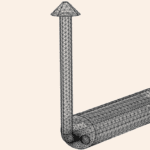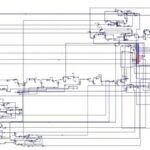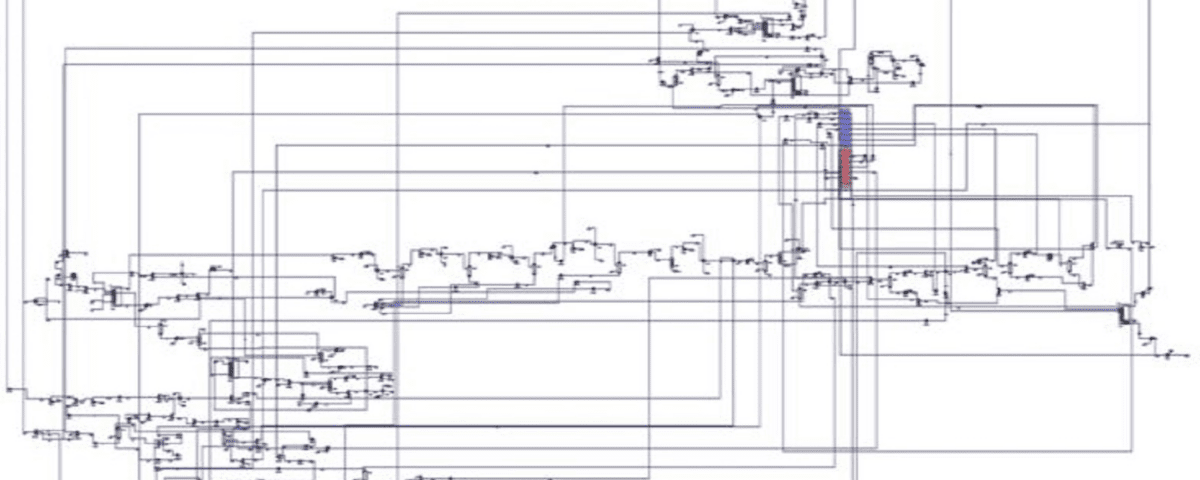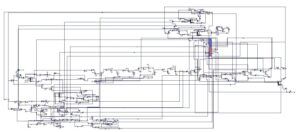Introduction
Morvarid Petrochemical Company, located in the South Pars Special Economic Zone, is a strategic petrochemical complex in Iran, leveraging advanced technologies and direct access to South Pars gas resources. The complex produces high-value products that support both domestic demand and exports. Below is a comprehensive overview of each primary production unit and process within Morvarid Petrochemical Company.
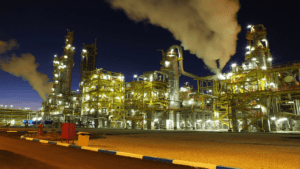
1. Olefin Unit
Ethylene Production Process
The Olefin Unit at Morvarid Petrochemical Company has a production capacity of 500,000 tons of ethylene per year, using ethane as the primary feedstock. This unit sources 650,000 tons of ethane annually from the South Pars fields. The ethylene production process involves ethane cracking at high temperatures and pressures in the presence of catalysts, converting ethane into ethylene and byproducts. Ethylene is a vital feedstock for various downstream products, including plastics, resins, and solvents.
Role of the Olefin Unit in the Production Chain
Most of the ethylene produced in this unit (340,000 tons per year) is used as feedstock in the Monoethylene Glycol (MEG) Unit. The remaining 160,000 tons are exported to international markets. As one of the most widely used base materials in the petrochemical industry, ethylene plays a crucial role in the production chain, supplying essential polymers and derivative products for multiple applications. Additionally, ethylene exports are a significant revenue source, contributing to the country’s foreign currency income.
2. MEG Unit
Production Capacity and Process of MEG, DEG, and TEG
The MEG Unit at Morvarid Petrochemical has an annual production capacity of 500,000 tons of Monoethylene Glycol (MEG), making it one of the largest MEG production units in the region. MEG is a key ingredient in various industries, including polyester fiber manufacturing, antifreeze formulations, and packaging. The unit also produces 50,000 tons of Diethylene Glycol (DEG) and 3,000 tons of Triethylene Glycol (TEG) as by-products, which are used in industrial lubricants, solvents, and other chemicals.
Feedstock Supply and MEG’s Role in Industry
This unit receives 340,000 tons of ethylene from the Olefin Unit and 368,000 tons of oxygen from the Utility Unit as feedstock. The MEG production process involves ethylene oxide hydration, which requires careful control of temperature, pressure, and safety measures. As a high-demand base material, MEG significantly contributes to domestic and international markets, especially in the polymer and synthetic fiber industries.
3. Utility and Auxiliary Services
Role of Utility and Auxiliary Services
The Utility and Auxiliary Services section is critical for supplying essential materials and energy to the production units. It provides oxygen, steam, cooling water, electricity, and other necessary resources. For example, the oxygen required by the MEG Unit is supplied by the Utility section. A reliable and efficient utility service ensures stable production, minimizing downtime and optimizing energy and resource use. Additionally, efficient management of these resources helps reduce operational costs and enhance overall productivity.
Simulation and Optimization
Application of Aspen HYSYS Software
Morvarid Petrochemical has utilized Aspen HYSYS software to conduct a full simulation of its processes. This software enables precise analysis, allowing for detailed technical and economic evaluations. By simulating and optimizing each process, engineers and managers can identify critical points in both design and operation, leading to enhanced efficiency and cost reduction. Additionally, these simulations are crucial for predicting equipment performance under varying operational conditions.
Economic and Environmental Impacts
Morvarid Petrochemical has focused on optimization to reduce production costs and enhance product quality. Sustainable use of natural resources, along with modern technology, reduces the environmental footprint of the complex and improves product quality. Furthermore, the export of a portion of its products, particularly ethylene, contributes to the country’s economic growth and foreign exchange reserves.
Conclusion
Morvarid Petrochemical Company has established itself as a leading petrochemical producer in the region, employing advanced technology and skilled professionals to deliver high-quality products that meet international standards. By implementing detailed simulations and precise optimization strategies, the company has achieved significant cost savings and operational efficiencies. The complex also contributes substantially to both the domestic market and exports, underscoring its importance to Iran’s petrochemical sector.
With a focus on reducing costs and increasing productivity, Morvarid Petrochemical Company serves as a model of sustainability and efficiency within the petrochemical industry.
